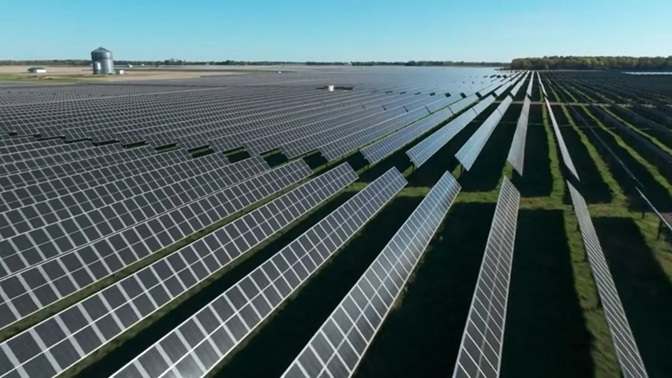The landscape of energy generation in the United States is changing rapidly, and the numbers prove it. In 2024, renewable energy sources—led by solar and wind—accounted for over 90% of all new electrical generating capacity. This shift marks a major step toward a cleaner, more sustainable energy future. But what’s driving this transformation, and what does it mean for the country’s energy grid? Let’s dive into the details.

Solar Takes the Lead in New Energy Capacity
Solar power emerged as the undisputed leader in new energy capacity in 2024. According to data from the Federal Energy Regulatory Commission (FERC), solar alone made up 81.5% of all new electrical capacity added last year. December was particularly significant, marking the 16th consecutive month in which solar was the largest source of new energy capacity.
- In December 2024, 4,369 megawatts (MW) of solar energy came online, accounting for 80.1% of all new capacity that month.
- The entire 2024 year saw 30,816 MW of solar installed, nearly nine times more than new natural gas and nuclear capacity combined.
- Wind energy added 3,128 MW, while hydropower, biomass, and geothermal together contributed 293 MW.
- Renewable energy sources made up 90.5% of all new electricity generation added in 2024.
These figures highlight a fundamental shift: solar and wind are no longer niche players—they are now the dominant sources of new power generation.
Why Is Solar Growing So Fast?
The rapid expansion of solar energy can be attributed to several key factors:
- Declining Costs – Advances in technology and increased production have driven down the cost of solar panels, making them more affordable for utilities and homeowners alike.
- Government Incentives – Tax credits and state-level policies continue to encourage solar adoption.
- Corporate Demand – More businesses are committing to renewable energy goals, driving demand for solar power.
- Grid Reliability – Solar energy has proven its ability to sustain power during extreme weather events, reducing reliance on fossil fuels.
With these factors at play, solar power is expected to keep growing at an unprecedented rate.
As of the end of 2024, solar and wind together account for nearly 22% of the United States’ total utility-scale power generation capacity. When including small-scale solar (such as rooftop systems), that number climbs even higher.
- Solar Power Share: 10.2% of U.S. installed capacity (up from just 1% in 2014)
- Wind Power Share: 11.7%
- Total Renewable Energy Share (Including Hydropower, Biomass, Geothermal): 31.0%
Renewables are now producing almost a third of all U.S. power capacity—a massive jump from just a decade ago when they accounted for 16.6%.
Solar Poised to Overtake Coal and Wind
FERC’s latest projections indicate that solar power will continue its meteoric rise. Between 2025 and 2027, the U.S. is expected to add 91,558 MW of new solar capacity, which is nearly four times more than the expected growth of wind energy. If this pace continues, by early 2028:
- Solar will make up 16.1% of all installed U.S. electricity generation capacity—surpassing both coal and wind.
- The total share of renewables will climb to 37.3%, approaching natural gas’s 40.2% share.
- If small-scale solar is included, renewables could exceed 40% of total U.S. electricity capacity.
Meanwhile, fossil fuels are projected to decline. Over the next three years:
- Coal capacity will shrink by 23,925 MW.
- Oil capacity will fall by 2,293 MW.
- Natural gas capacity will contract by 833 MW.
With no new nuclear power plants in the pipeline, renewables are positioned to take the lead in America’s energy mix.
The U.S. energy system is undergoing a historic transformation. Just a decade ago, solar power was barely a blip on the energy radar. Today, it is the dominant source of new electricity generation. With wind power also growing steadily, the nation is moving closer to a clean energy future.
This shift isn’t just good for the environment—it’s also good for consumers. Lower energy costs, improved grid stability, and reduced reliance on fossil fuels all contribute to a more sustainable and resilient energy system. The next few years will be crucial in determining how fast the U.S. can transition to a renewable-powered future.
Related Post
- The Rise of DeepSeek- How A Small AI Startup Shook the Tech Giants
- Hydrostor gets $1.76B DOE conditional loan guarantee for 4 GWh energy storage project
- New DOE Report Say America Recycle 90% of Wind Turbine materials